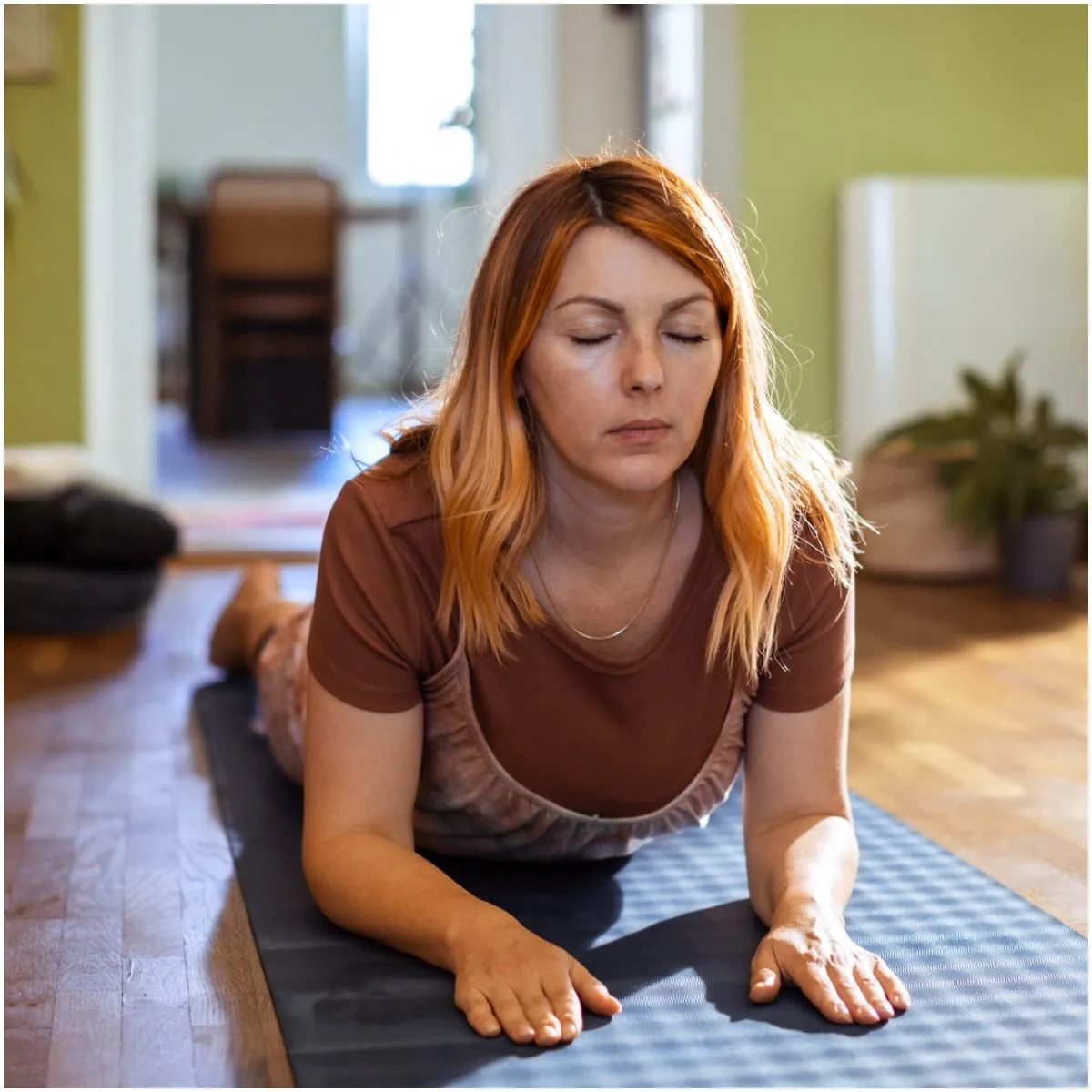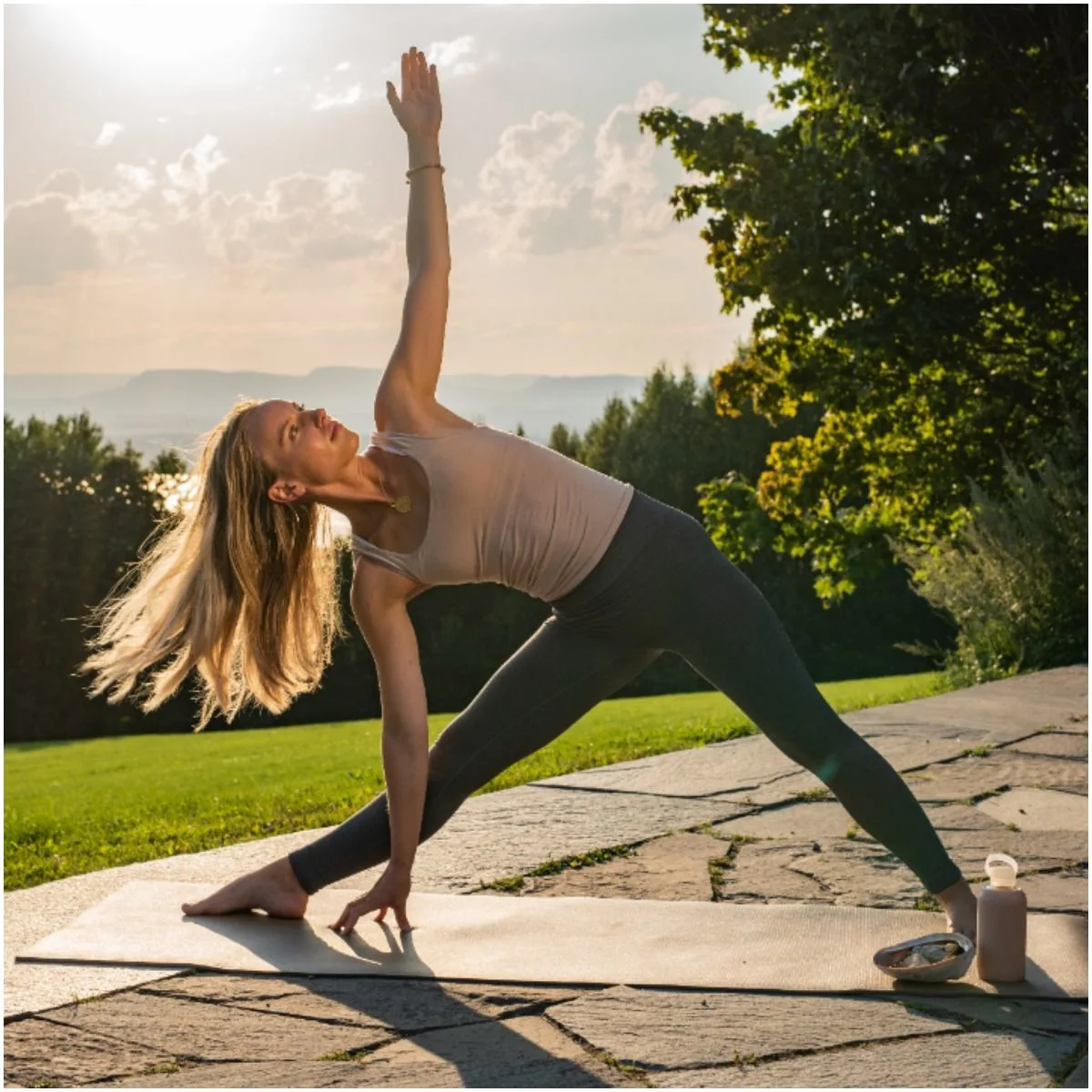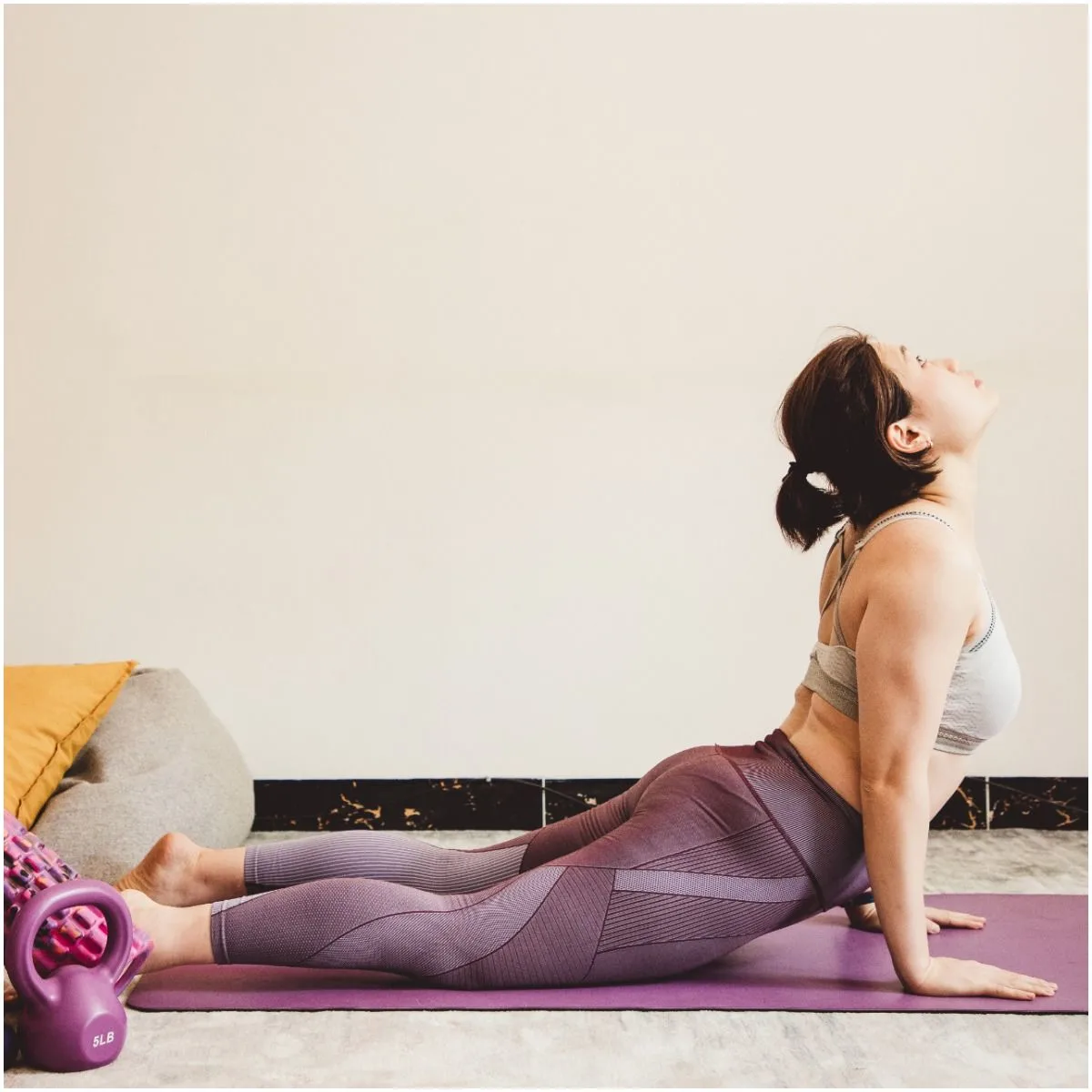Lower back pain is a common complaint that affects people of all ages. According to statistics, an estimated 80% of adults experience low back pain at some point in their lifetimes.
Low back pain is also the most common cause of job-related disability, according to the National Institute of Neurological Disorders and Stroke.
Causes
Causes of low back pain may include:
- strain or tears to the ligaments or muscles supporting the back;
- compression fractures to the spine from osteoporosis;
- spine curvatures that may be inherited and seen in teens or children;
- narrowing of the spinal canal (spinal stenosis);
- sciatica, a common type of pain affecting the sciatic nerve;
- herniated or ruptured disk;
- very tense muscles (muscle spasm);
- fracture of the spinal cord;
- cancer involving the spine.
While there is no specific cure for low back pain, there are some easy steps you can take now to start managing lower back pain.
List Of 11 Restorative Yoga Poses For Lower Back Pain:
#1 Bound Angle Pose (Baddha Konasana)
Bound Angle pose, sometimes called “Cobbler’s Pose,” is an effective seated yoga posture that opens the hips and groins. Benefits include:
- helps relieve menopause symptoms;
- reduces sciatica symptoms;
- stimulates the heart and improves general circulation;
- soothes menstrual discomfort;
- improves circulation;
- stimulates the abdominal organs.
Contraindication – do not practice Baddha Konasana if you have a hip or knee inflammation or injury.
#2 Big Toe Pose (Padangusthasana)
The name Padangusthasana comes from the Sanskrit word ”pada,” which means ”foot,” and the Sanskrit word ”angustha,” which means ”thumb” and ”asana,” which means ”pose.”
The Big Toe Pose is an easy standing Yoga Pose which is an effective stretching pose for all muscles of the physical body.
Contraindication – it is recommended to avoid Padangusthasana if you have lower back or neck injuries.
#3 Cat-Cow Pose (Marjarasana-Bitilasana)
The Cat-Cow Pose can be included in flow yoga sequences as it helps boost energy in the body.
In addition, Marjarasana-Bitilasana helps in relieving back pain, and it improves blood circulation between the vertebrae of the spine. It can also help you improve your balance and posture.
Tip – if you have a neck injury, it is recommended to keep the head in alignment with the torso.
Contraindication – avoid the practice of Cat-Cow Pose if you have weak shoulders and wrists.
#4 Child’s Pose (Balasana)
Child’s Pose, also referred to as Balasana, is typically used as a resting position in between more difficult poses during a yoga practice. This pose stretches the lower back, legs, and hips.
Balasana can help relieve back pain.
Tip – during this asana, make sure to maintain a focus on your breathing
Contraindication – do not practice Balasana if you have a current knee injury.
#5 Locust Pose (Salabhasana)
Locust Pose, also known as Salabhasana, effectively preps beginners in yoga for strengthening the back of the legs, torso, and arms. Additional benefits include:
- improves posture;
- stimulates internal organs;
- tones abdominal muscles.
Tip – if lifting your legs bothers your lower back, it is recommended to keep your feet on the floor.
Contraindication – avoid practicing Salabhasana if you have a recent abdominal surgery, injury to your back, or you are at menstruation.
#6 Reclined Pigeon Pose (Supta Kapotasana)
Reclined Pigeon Pose allows you to open your hips. Plus, it helps stretch your quads and hamstrings. Supta Kapotasana is actually considered a warm-up yoga pose to prepare the physical body for more intense yoga poses.
Benefits of Supta Kapotasana include:
- improves circulation in the lower back and hips;
- helps you feel balanced and relaxed;
- improves digestion;
- increases circulation in the pelvic area of the body;
- relieves piriformis pain (the pain is due to the piriformis muscle compressing the sciatic nerve);
- increases the range of motion in the hips.
#7 Sphinx Pose (Salamba Bhujangasana)
Sphinx Pose, also referred to as Salamba Bhujangasana, is a beginning backbend in yoga that helps to open the low back and chest.
The pose also strengthens the spine while stretching the tummy and the shoulders. Salamba Bhujangasana can be practiced with either a passive or active approach.
Tip – it is recommended to use a blanket under your pelvis or forearms for added comfort.
Contraindications – avoid Salamba Bhujangasana if you have a recent abdominal surgery. Women who are pregnant should also avoid practicing Sphinx Pose while on the floor. Additionally, if you already have back pain, consult a healthcare professional first to make sure it is safe for you to practice Salamba Bhujangasana.
#8 Extended Triangle (Utthita Trikonasana)
The extended triangle pose, also known as Utthita Trikonasana, is a standing yoga posture that improves flexibility and balance. Additionally, this pose strengthens the ankles, knees, and thighs as well as relieves backache during pregnancy.
Tip – for more experienced yoga practitioners, align the front heel with the back foot arch.
READ MORE: 10 Poses of Yoga for Knee Pain
#9 Supine Spinal Twist (Supta Matsyendrasana)
Supta Matsyendrasana, better known as Spinal Twist Pose, is an excellent posture that encourages movement and mobility throughout the entire back.
Additional benefits of Supta Matsyendrasana are:
- promotes detoxification;
- improves circulation in the hips and lower back;
- improves digestion.
Tip – it is recommended that you should breathe smoothly and deeply throughout Supta Matsyendrasana.
Contraindication – do not practice this pose if you have a recent injury to the back or knees.
READ MORE: 27 Celebrities Who Practice Yoga
#10 Thread the Needle (Parsva Balasana)
Thread the Needle Pose, also known as Parsva Balasana, is a shoulder-releasing yoga posture that is suitable for all yoga practitioners. This pose is an effective way to stretch the hips, especially the piriformis muscle.
Additional benefits of Parsva Balasana include:
- oxygenates your upper extremities;
- opens the outer and upper muscles of the shoulder;
- compresses the muscles of the upper chest;
- reduces lower back pain.
Tip – if your knee caps hurt, it is recommended that you place a firm blanket under the knees.
Contraindication – Parsva Balasana should be avoided by people with shoulder or neck injuries.
READ MORE: The Five Tsa Lung Trul Khor Exercises
#11 Cobra Pose (Bhujangasana)
Cobra Pose, also known as Bhujangasana, is a pose that can be practiced by beginners. It helps to prepare the physical body for deeper backbends.
Moreover, Bhujangasana lengthens your spine and opens your chest. In addition, it invigorates the nervous system.
Tip – if you are very stiff, it is recommended that you avoid doing Bhujangasana on the floor.
Contraindication – do not practice Bhujangasana if you have carpal tunnel syndrome (a condition that causes numbness, pain, and tingling in the arm and hand).
Images credit – Shutterstock & Getty
READ THIS NEXT: The Top 10 Spiritual Benefits of Yoga
References https://www.ncbi.nlm.nih.gov/pmc/articles/PMC3872656/ https://bmjopen.bmj.com/content/4/6/e005505

